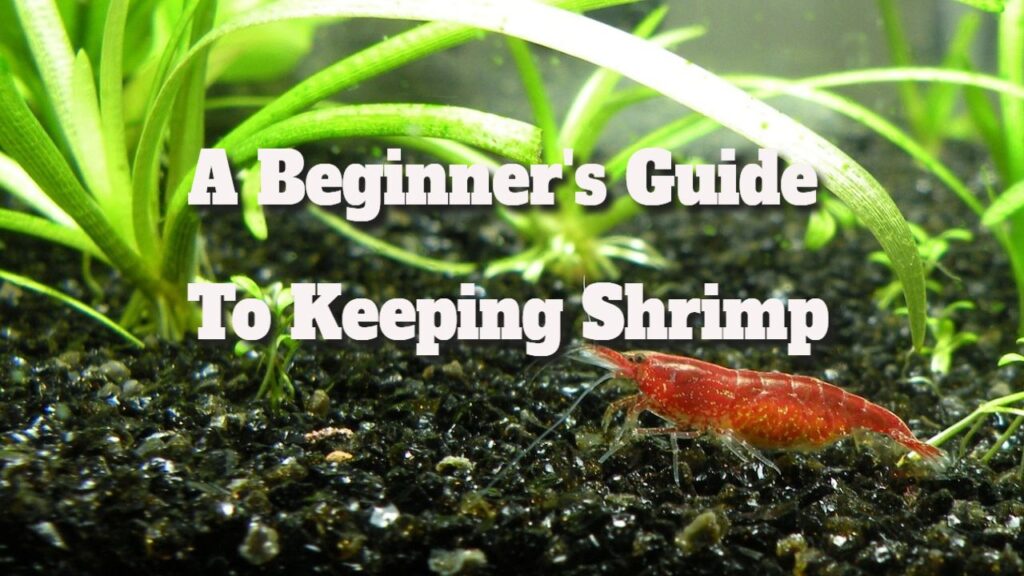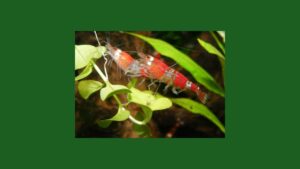A Beginner’s Guide To Keeping Shrimp
Shrimp are Friends, Not Food!
Even though keeping fish can be gratifying, there are occasions when additional diversity is required. Here's a quick overview of how to keep these pleasant, colourful, and prolific critters in your tank.
First and foremost, the species of prawns you choose will decide how easy they are to care for and propagate. I divide the selection into three categories-
Neocaridina shrimp
Caridina shrimp
“Other”
In addition to being the species that I keep, Neocaridina is the easiest and cheapest to purchase of the three, and they will be the focus of this guide.
Neos, You are the Chosen One
Neocaridina Davidi (dwarf cherry shrimp) are an excellent choice for any aquarist interested in shrimp, particularly beginners.
There are numerous colour variations, including red, blue, black, and green; having been painstakingly bred to express different colours, maintaining multiple colours in the same tank is not recommended.
They will mate indiscriminately; the offspring are frequently dull brown or translucent. “Blue Dream” and “Black Rose” are my favourites.
When purchasing prawns, remember that they are gregarious animals that thrive in groups of at least ten.
Anything less than this, and they will choose to hide rather than graze as a bunch in the open. I commonly see newcomers make the mistake of purchasing a few prawns for their communal tank and then claiming they never see them.
No New Friends
Large or aggressive fish are not suitable tankmates for shrimp. Barbs, bettas, and many others will often bully or harass the shrimp or eat the shrimp straight up for dinner.
Your best bet is a shrimp-only aquarium or a tank with small, peaceful fish (such as ember tetras or corydoras), lots of vegetation, and a decent water volume.
Don’t Mind the Crowds
Shrimp are small and produce less metabolic waste than fish, allowing them to be kept in smaller tanks with a higher population density.
Having said that, I wouldn't go overboard; a limit of 10-15 shrimp every five gallons is ideal. A 20-gallon tank is ideal for breeding.
If they are comfortable, Neocaridina shrimp will often breed (with a large enough baseline population, this will happen without the owner's intervention), and your tank will soon be filled with tiny shrimplets.
Almost any fish will eat these baby prawns, so keeping them in a shrimp-only or highly-planted aquarium makes sense if you want shrimplets to live and grow to adulthood.
I have a significant breeding colony in my densely planted high-tech and a small fish population.
Neocaridina prawns grow in temperate, shallow pools throughout Asia. This allows them to avoid using a heater (as long as your residence stays between 65 and 80 degrees Fahrenheit annually).
Mine are most comfy and active at temperatures between 70 and 76 degrees Fahrenheit. They prefer rather soft, acidic water and, in my experience, will breed best in settings with a pH of 6.8-7.5, GH of 4-6, and lower KH.
Despite their inclinations, they can typically adjust to most situations and can even live in some harsh water (though I would not recommend it).
Shrimp are more accessible to keep than fish in many ways, but they are susceptible to changes in water chemistry.
Please keep in mind that they are sensitive to copper and many other metals; excessive iron fertilisation to produce red plants and copper-containing water supplements might result in rapid mortality.
The trace amount of iron in a complete plant fertiliser is sufficient for producing the brightest red plants and should not hurt your Neocaridina shrimp at low concentrations.
Where am I?
Shrimp, unlike fish, react poorly to unexpected changes in water conditions. If you notice your prawns swimming around the tank like fish after a water change, they are unhappy with the new water you've introduced.
Having said that, it is critical to perform water changes at least once a week to prevent waste buildup.
I conduct many water changes in my high-tech tank, but my prawns don't mind because I take precautions to ensure that the freshwater I add nearly matches the characteristics of the existing water in the tank.
Failure to adapt to changing water conditions can result in leaping or death. If favourable water conditions exist, shrimp will not jump or climb out of a tank.
What about storing prawns in high-tech tanks? Many individuals have successfully grown Neocaridina prawns in tanks with CO2 supplementation, however it is critical that the CO2 level does not reach too high.
This can be accomplished by using a drop checker that is green (rather than yellow). Another thing to keep an eye out for is pH fluctuations caused by shifting CO2 levels.
What would you want to eat? Whatever…
Regarding diet, prawns are scavengers with lower nutritional requirements than fish. A community tank may not require specific feeding because the prawns will consume uneaten fish food, algae, and biofilm.
In a dedicated shrimp tank or a tank with a small fish population, the shrimp can be fed a couple of times each week. I feed them SL-Aqua M.O.R.E White pellets.
I've been keeping and raising Neocaridina prawns in my high-tech planted tanks for years without incident, thanks to my devotion to the criteria listed above.
I hope this tutorial helps you achieve success with yours. With correct housing and care, you can breed your prawns and never have to repurchase them!
The post A Beginner’s Guide To Keeping Shrimp appeared first on Unity Pets.
The Article A Beginner’s Guide To Keeping Shrimp Was Found On https://limitsofstrategy.com




Comments are closed